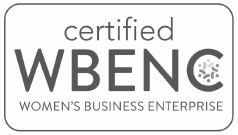Inbound marketing programs, also known as content marketing programs, help colleges and universities to align marketing with admissions. Effective higher ed content marketing programs speak directly to the target audience – think prospective students and their parents – and leverage compelling calls-to-action to yield measurable results. Here are five key things you need to know about inbound marketing for higher ed.
Consistency is key
Great content marketing programs are not only on-brand (in terms of visuals and voice) but maintain a consistent frequency for content generation. When executing an inbound marketing program, colleges and universities must commit to consistently generating a steady volume of high-quality educational content. This content may live on a blog, social media market channels and in whitepapers, e-books and toolkits.
Students can play an important role in the process
Who better to tell prospective students about life on campus than current students? Peer-to-peer communications can strengthen inbound marketing programs and bring an added layer of authenticity to the program. Students can become an extended part of the content creation team by authoring guest blog posts, starring in short Q&A videos, conducting Instagram takeovers and serving as a sounding board for content concepts and campaign ideas.
You need a strong content distribution mechanism in place
This isn’t “build it and they will come”. While maintaining a content-rich website will help to draw in target audiences who are already looking for the content you are offering (think tips for choosing the right college, how to balance a double major, etc.), having a strong content distribution mechanism in place is critically important. When building out monthly content calendars, include areas to outline how each piece of content will be distributed.
Video is power
Whether you engage a group of student ambassadors to shoot short videos on their smartphones to offer an insider’s perspective on campus life or invest in a professionally produced profile video, there is a great opportunity to use video marketing to strengthen your higher ed content marketing program. Forrester Research reports one minute of video has the equivalent value of 1.8 million words so now is the time to figure out how video fits into your content marketing strategy.
Alignment with traditional marketing is important
Inbound marketing isn’t a replacement for traditional marketing and sales activities and this couldn’t be truer than in higher ed. The admissions team will still go to high school college fairs and professors will still present at industry conferences. The trick is finding ways to bridge the gap between these inbound and traditional activities to maximize marketing ROI.
Examples of how traditional marketing can fuel a higher ed content marketing program include extracting presentation highlights for blog posts and sharing presentations on SlideShare. Inversely, inbound marketing can fuel traditional marketing by providing content (whitepaper, ebooks, toolkits) for the admissions team to hand out to prospective students at college fairs.
While inbound marketing and content marketing programs require colleges and universities to generate a steady stream of high-quality content, these programs build brand trust among prospective students and their families. Content marketing also helps colleges and universities to convey the on-campus experience to those who may be too far away to visit campus in person during the early consideration phases of the admissions process.
Interested in implementing an inbound marketing program for your college or university? Contact us today!

